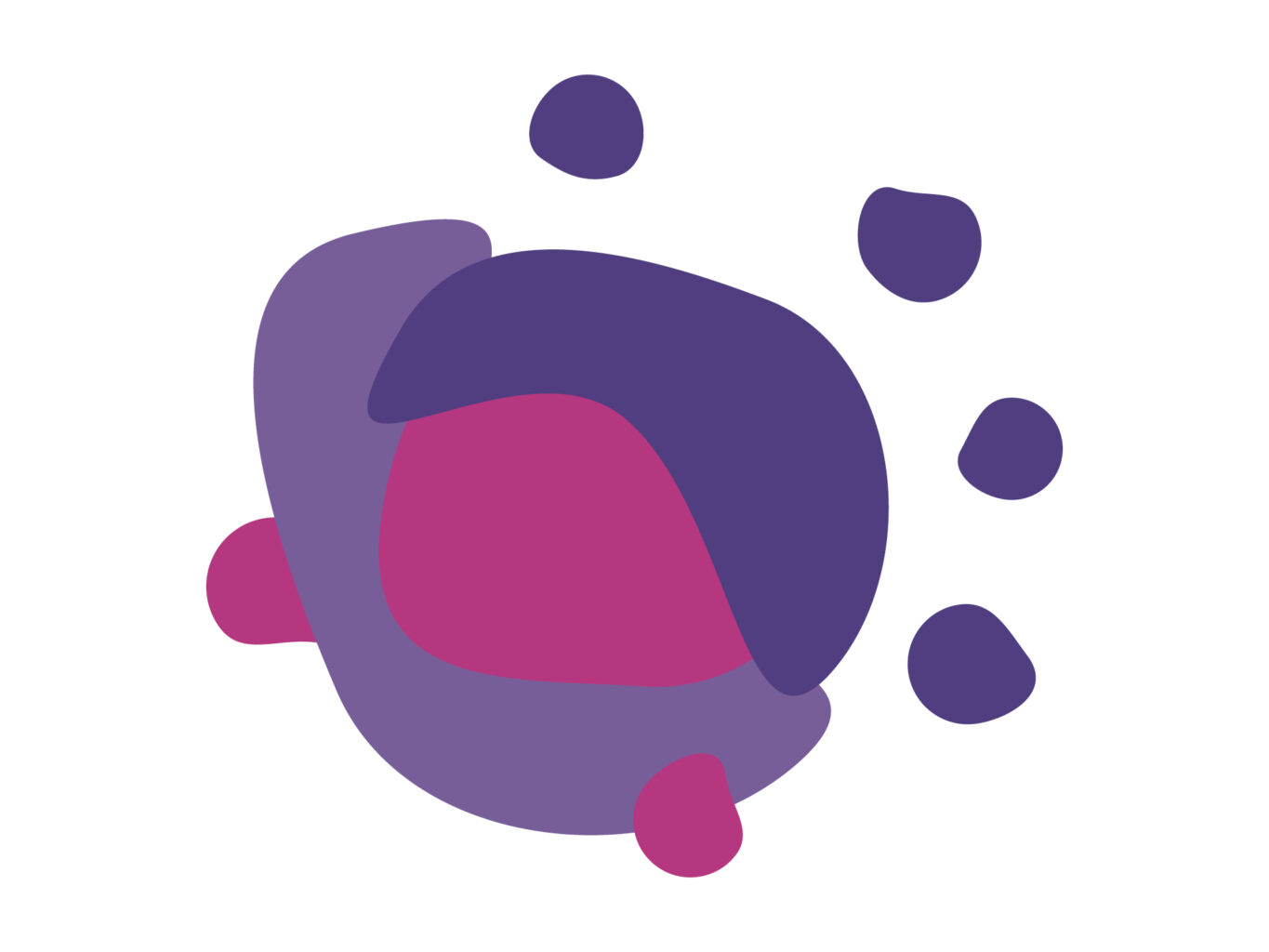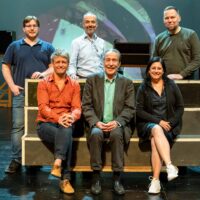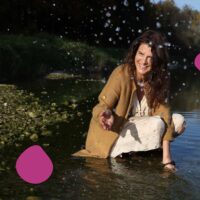What is money? Do we need money? If we fetch water from the spring and go into the forest and gather food, then we don’t need money. When we follow our individual impulses to fashion things in an entrepreneurial, creative way as human beings, then something like money becomes relevant. Money in that sense is the «spiritual element of the economy» – that is what Rudolf Steiner calls it – and I wanted to understand that.
If money is the spiritual element of the economy, how is it at work, then, when over ninety percent of the money is based on debt, and debt brings stress, anxiety, and fear? For me, it was logical that I could understand this better by going to a bank. So I became a sustainability officer at a private Swiss bank, which was a very interesting apprenticeship. I was looking for the Archimedean lever to bring about the greatest possible change. I wanted to know who can change things. I found that even the managing director of a bank cannot really do it. Even if sustainable projects are wanting to be undertaken, they remain unfree. So I kept looking for even bigger and more powerful people. This was my hypothesis: the bigger and more powerful they are, the more likely they are to be able to change something or to know where the Archimedean point for change lies in our society.
I then had the opportunity to develop the topic of ‹Money and Nature› for WWF, first in Switzerland and then for international projects. To do this, I did a lot of research with McKinsey, Credit Suisse, KPMG, and others to find out where the disconnect lies between the decisions of financial institutions and their impacts, all the way up to G20 negotiations and central banks, where we tried to influence even higher officials. I thought that if the banks cannot do it, maybe the Bank for International Settlement or the Financial Stability Board can. Finally, I was forced to conclude that the topic that was not talked about – or could not be talked about – was the creation of money. And that is why in the end, I went on to actively examine the monetary reform movement.
Becoming Part of the Solution
I had various experiences in the name of sustainability, but one affected me particularly. I flew across the Atlantic for a session on ‹decarbonising bank portfolios›. I was invited to New York, to a five-star hotel, where JP Morgan, Goldman Sachs, Credit Suisse, and UBS were present. I knew, of course, and so did they, that they were not going to exit from coal. Nevertheless, the report to which we contributed provided relevant insights. But I perceived there that a ‹field› exists among us in which I can express certain things and not others – such as the question of the creation of money, but also many others. I noticed that this field exerts a very great influence on me and that this influence is probably significantly greater than the influence I could ever exert on the field. Truly recognizing that, as well as my own hubris and inability to really make a difference, occurred at a moment in this hotel during a coffee break. I went outside to catch my breath. There were Occupy Wall Street people on the street and I heard someone speaking: Charles Eisenstein.
That opened my heart. But at the same time, I felt anger, fear, and sadness inside me because we were not connected in any way. I was not connected with those who were protesting there. I was somehow on the wrong side, but then again I wasn’t because the people I was dealing with all wanted to make a difference too. This inability to really be in touch with each other and follow inner truth together overwhelmed me. At that moment I knew: if I stay any longer and continue to write studies and attend conferences, I will become part of the problem, indeed have been for a long time – and not part of the solution. So there was no Archimedean lever there. It became clear to me all of a sudden that in order to really make a difference I had to become an entrepreneur. And that it was important for me to return to what things are essentially about. These are the very simple things: healthy soil, healthy water, food, and community. What does it take for farmers to be able to work regeneratively? What does a region need? What does it take for artists to make art that feeds the soul? What associative structures are we creating in the regions? I set out on this journey together with other entrepreneurs, and courageous people.

Regenerating Communities and Soils
At some point a few years ago, I traveled to a workshop in Portugal, the country where I spent my childhood, with two colleagues with whom I founded Food Networks CH. It was about associative structures in rural areas. A woman called Marta came up to me and asked: Do you only do workshops or will you also come home and do this with us? That’s when I knew I had to do it. Suddenly my life looked very different. I was back in Portugal, where I had spent my childhood. But this region had changed a lot. At first, there were three of us, three women with the impulse to regenerate this region. And that is not at all easy in a region on the edge of Europe where the soil is on the verge of desertification and the people have few prospects. After all, we didn’t know where to apply the lever for change. Meanwhile, only five inhabitants per square kilometer were left in this region. The rest had migrated to the cities. Only those who ‹wouldn’t get anywhere› – that’s what the younger people there were told – went into agriculture. That was the starting point. It was clear to me that real pioneers and very experienced farmers were needed here. In our case, it was fortunate that we were able to attract Ernst Götsch, a pioneer of agroecology. He coined the term syntropic agriculture. With the help of two of his students, one of the local farmers was able to regenerate the first pilot area. Later we established a training and advanced training program for regenerative farmers who are regenerating more and more land.
This has resulted in an associative approach in which increasing numbers of farmers are participating and establishing biodynamic agroforestry with suitable plant collaborations. This impulse restores people to their fundamental task of caring for the earth, for its soil, from the very beginning. Here, syntropic agriculture works with constant rejuvenation impulses through frequent pruning. Through this and the permanent covering and shading of the soil, the plant communities are able to absorb water much better and also support each other. One of the farmers said it was as if the soil had suffered from dementia. When we introduce a healing impulse into it, it remembers again and it becomes possible to restore it. It is about perceiving the holistic element on a small scale in order to heal something.
Things got really exciting when we started establishing syntropic school gardens in the schools in the region, working with children, and moving the classroom outside. Incidentally, the grandmothers then joined in too because they wanted to get involved. So we cooked together once a month. In the meantime, the whole thing has become relatively big. The initiative is not quite grown up yet but it is already somewhat independent. A soil regeneration initiative has emerged in parallel. On an area of 10,000 hectares, the farmers involved are engaged in a process of mutual learning and experimentation.

Getting the Monetary System Moving
However, it is still the case that I have to find gift money for this, and there is something wrong with that. Again and again, I have observed the phenomenon I call ‹A giant comes to the village›. That is when a big chain comes into a region. The small initiatives or the small farms that have been built up can then count themselves lucky if they are allowed to supply the big one. But a lot of small things, also in craftsmanship, are lost of course. Those who are lucky get a job and everyone shops at the giant. But what happens to the money in the process? This is sucked out of the regional context as if by a hoover. How can we succeed in turning this phenomenon upside down or inside out? How could a monetary system be created that takes seriously the resources we have locally and only exists to circulate? Just as water is finely distributed and remains in the river so that everyone gets what they need?
I kept looking around for people and met Arie Ben David, with whom I am now continuing to develop the Israeli impact startup Shareitt. He told me: the biggest department store in the world is comprised of our collective households. If we succeed in making visible resources, things, or even talents that we want to pass on, then together we are the biggest department store in the world. He started to develop this project with 5000 women, mainly mothers. Meanwhile, 77,000 people are now using this platform. After Israel, we established the same in Brazil and this September, also in Switzerland.
Eventually, something came up that was very exciting and that we had not anticipated. Teachers asked us if we could also use the platform to make lessons more decentralised. All sorts of things in the world have changed but schools are still like they were in the 1800s. Children sit all the time and it is becoming increasingly difficult for teachers. So we have done pilot projects to use this platform for teachers. The principle is that the children teach each other and engage in associative projects. Because if you’re really well rested, you listen really carefully and the lecture is wonderful, then you might pick up ten percent of the material; in a workshop maybe forty percent. But when you yourself subsequently teach, you really do have a ninety percent grasp of the material. Once again it is the idea of association: to release dormant peer-to-peer talents. The children themselves hardly use the technology. Teachers can make use of it to set up processes of mutual learning, support, and joint creative projects, such as regenerative school gardens.
What fascinates me is not what we have already done, but it is above all the things we have not discovered yet. All the dormant talents and potentials that we do not bring to life because the money does not penetrate there. This is precisely where we come in and I am excited to see how communities, municipalities, and networks develop as they get resources flowing with the new co-creative and decentralized platforms. Instead of continuing to accept money as debt, as a natural phenomenon, we can restore it to its proper place. Not only can we think about it differently but we can already implement it differently today, and we can do something to make it what it really is. For me, money is nothing other than a thank you. It can indeed become that, which is why Steiner said that it is the spiritual element of the economy. Then it could enable us to make choices that are individual and help us to be generous and loving towards each other. And such a healthy monetary system enables free and intuitive action. Researching and working on this is the most important Archimedean lever of modern times. If we manage that, many slumbering dreams will come true.
Katharina Serafimova gave this keynote at this year’s World Goetheanum Association Forum on the 24th of September: ‹Really transforming the world economy – using money as an ‘Archimedean lever’ for this transformation›. Summary of the Forum
Podcast interview with her and Arie Ben David in the series Shaping the World
Web
Shareitt
Regenerate Forum
Terra Sintrópica
Illustration Fabian Roschka <strong>Translation</strong> Christian von Arnim






Money can make people slaves; at the same time,
A very inspiring Address I am taking a lot of ideas from!
Il caso Robert Owen citato da R. Steiner nel libro: “I punti essenziali della questione sociale” O.O.23 ci dovrebbe far capire che senza un lavoro individuale intenso e profondo atto a rivoltarci come un calzino non si va da nessuna parte.
Perhaps a delve into Threefold would clarify some thoughts and ways to facilitate sustainable change?